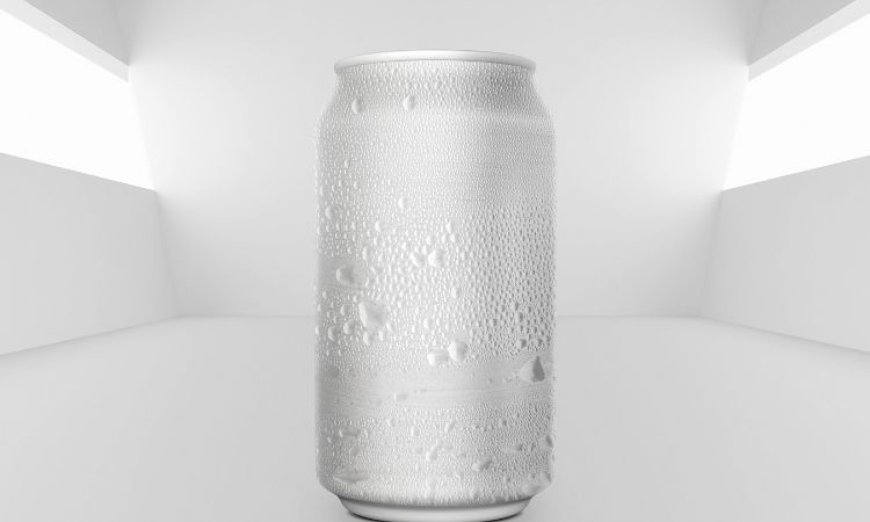United States Aluminum Beverage Cans Market Size, Share (2024-2032)

The United States aluminum beverage cans market size was approximately USD 11.72 billion in 2023. The market is assessed to grow at a CAGR of 4% between 2024 and 2032, reaching a value of USD 16.84 billion by 2032. Aluminum cans have long been a staple in the beverage industry, celebrated for their recyclability, lightweight nature, and ability to preserve the quality and flavor of beverages. This blog post aims to provide a comprehensive overview of the U.S. aluminum beverage cans market, covering market size, growth, segmentation, regional analysis, market dynamics, and competitive landscape.
Market Size and Growth (2024-2032)
The U.S. aluminum beverage cans market has shown significant growth over the past few years. With the market size at USD 11.72 billion in 2023, it is projected to reach USD 16.84 billion by 2032, growing at a CAGR of 4%. This growth can be attributed to the increasing demand for sustainable packaging solutions, consumer preference for canned beverages, and the rising consumption of various types of beverages.
Graphical representations of market size and growth trends can effectively illustrate the upward trajectory of the market, highlighting key milestones and future projections.
Market Segmentation
By Product Type
2-Piece Cans 2-piece cans are the most commonly used type in the beverage industry due to their durability and cost-effectiveness. These cans are made from a single piece of aluminum for the body and a separate piece for the lid. They are widely used for carbonated soft drinks, beer, and energy drinks. The market share for 2-piece cans is substantial, and they are expected to maintain their dominance due to their widespread use and efficiency in production.
3-Piece Cans 3-piece cans consist of a separate top, bottom, and body. They are less common than 2-piece cans but are still used for certain beverages and specialty products. Although their market share is smaller, they are preferred for products requiring unique packaging solutions. Growth trends indicate a steady demand for 3-piece cans in niche markets.
By End Use
Carbonated Soft Drinks Carbonated soft drinks are one of the largest segments using aluminum cans. The convenience and preservation qualities of aluminum make it the ideal choice for these beverages. Consumption patterns show a stable demand, driven by both regular and diet soda options.
Beer The beer industry is a major driver of the aluminum beverage cans market. Cans offer excellent protection from light and oxygen, preserving the taste and quality of beer. The craft beer movement and the popularity of canned beer among consumers contribute significantly to market growth.
Energy Drinks Energy drinks are a growing segment in the aluminum cans market. The portability and durability of cans make them perfect for the on-the-go lifestyle of energy drink consumers. Market demand for these beverages continues to rise, supported by marketing campaigns and new product launches.
Water Bottled water is increasingly being packaged in aluminum cans as a sustainable alternative to plastic bottles. The eco-friendly aspect of aluminum cans appeals to environmentally conscious consumers, driving market demand.
Others Other beverages, including juices, teas, and functional drinks, also utilize aluminum cans. This segment, though smaller, is diversifying as manufacturers explore new product offerings.
Regional Analysis
The U.S. aluminum beverage cans market is analyzed regionally to understand the performance and growth across different areas. Key regions driving market growth include:
- Northeast
- Midwest
- South
- West
Each region has unique consumption patterns and preferences that influence the market. For instance, the West Coast's emphasis on sustainability and health-conscious products boosts the demand for canned water and energy drinks.
Market Dynamics
SWOT Analysis
Strengths
- High recyclability of aluminum
- Lightweight and durable
- Strong market presence
Weaknesses
- Competition from alternative packaging materials
- High initial production costs
Opportunities
- Growing consumer preference for sustainable packaging
- Expansion in new beverage segments
Threats
- Fluctuating raw material prices
- Regulatory changes
Porter’s Five Forces Analysis
Competitive Rivalry The market is highly competitive, with major players constantly innovating and expanding their product lines.
Bargaining Power of Suppliers Suppliers have moderate power due to the availability of raw materials and the ability to switch suppliers.
Bargaining Power of Buyers Buyers have significant power given the availability of alternative packaging options.
Threat of New Entrants Barriers to entry are high due to the capital-intensive nature of the industry and established brand loyalty.
Threat of Substitutes Alternative packaging materials like plastic and glass pose a moderate threat.
Key Indicators for Demand
Consumer preferences for sustainability, the growing beverage industry, and the rise in on-the-go consumption are key indicators driving demand for aluminum beverage cans.
Key Indicators for Price
Raw material costs, production efficiency, and regulatory policies are critical factors influencing the pricing of aluminum beverage cans.
Competitive Landscape
The U.S. aluminum beverage cans market features several major players, including:
- Ball Corporation
- Crown Holdings, Inc.
- Ardagh Group
- Silgan Containers
These companies dominate the market through strategic initiatives, product innovations, and mergers and acquisitions. Their market shares and recent developments shape the competitive landscape.












